Build Elegance in Nature: The Story Behind NifeliZ’s Mineral Collection
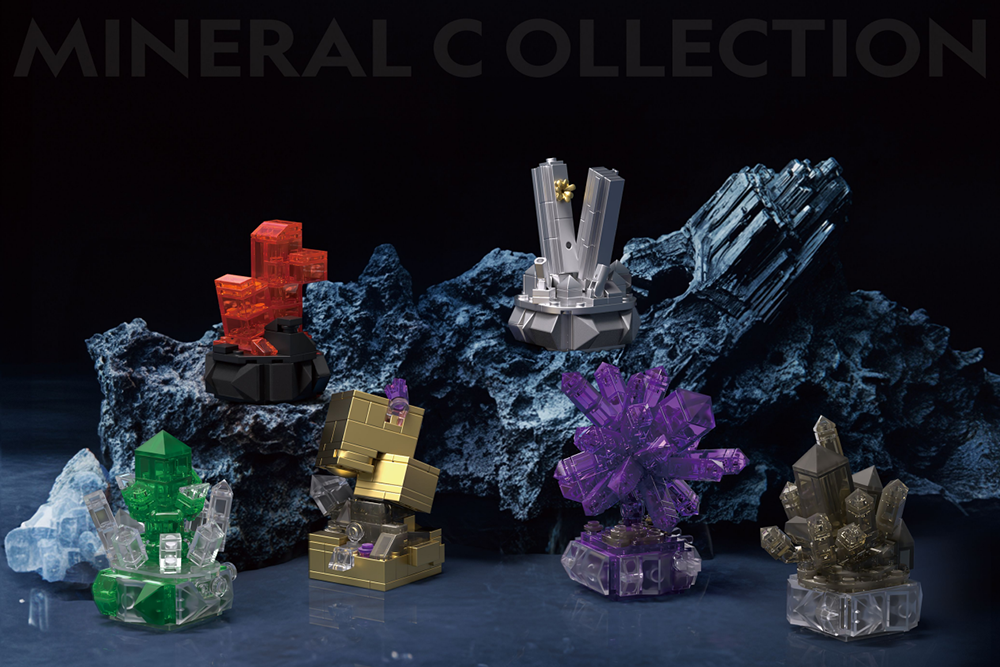
A Designer’s Journey: Where Travel Meets Bricks
Joe, has always been a man of two passions: wandering the world and tinkering with tiny treasures. From the jagged peaks of the Rockies to the crystalline caves of Mexico, his travels have fueled a fascination with Earth’s hidden gems. So when the idea of creating a mineral-inspired building brick set arose, it wasn’t just a project—it was destiny.
“I wanted to bring the magic of geology to your desk,” Joe says, grinning. “Imagine holding a piece of the planet’s history, but in bricks.”
Why Minerals? Blame It on the Flowers (Sort of)
The story begins with a pivot. Initially, the team aimed to create a floral-themed building brick set. But Joe, ever the rebel, had other ideas. “Flowers are lovely, but minerals? They’re like nature’s mood rings—each one tells a wilder story,” he explains.
The goal shifted: instead of petals, they’d craft Stibnite’s razor-sharp layers, Pyrite’s glittering cubes, and Amethyst’s mystical glow. “We wanted something that felt alive,” Joe adds. “Minerals aren’t just rocks—they’re art forged by time.”
Joe shared the stories about his little pressures and combined with science version:
Stibnite(Sb₂S₃), with its striking metallic luster and needle-like crystals, was once known as “kohl” in ancient Egypt. Crushed into powder, it was used as eyeliner to protect against eye infections and glare. However, its high antimony content made it toxic—a risky beauty secret!
Science: Antimony extracted from stibnite is used today in flame retardants, electronics, and medieval alchemists even tried (and failed) to turn it into gold.
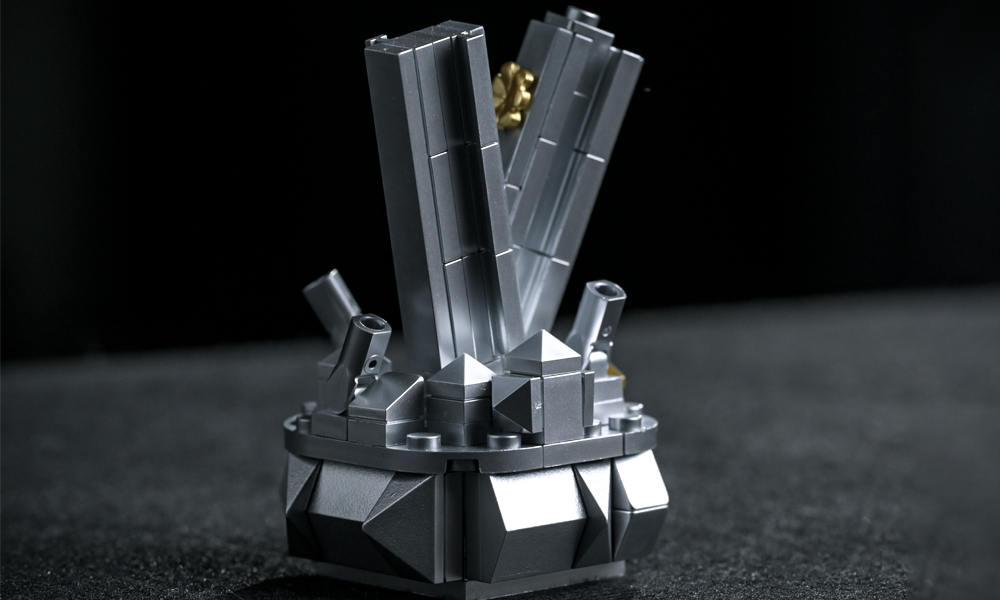
Pyrite (FeS₂), nicknamed “Fool’s Gold,” pyrite famously tricked gold rushers during the 19th century. Its brassy cubes glitter like treasure but contain iron and sulfur instead of precious metal.
Science: Pyrite forms in sedimentary rocks and reacts with water/air to produce sulfuric acid—making it an environmental concern in mining areas. Ancient Incas polished it into mirrors for rituals.
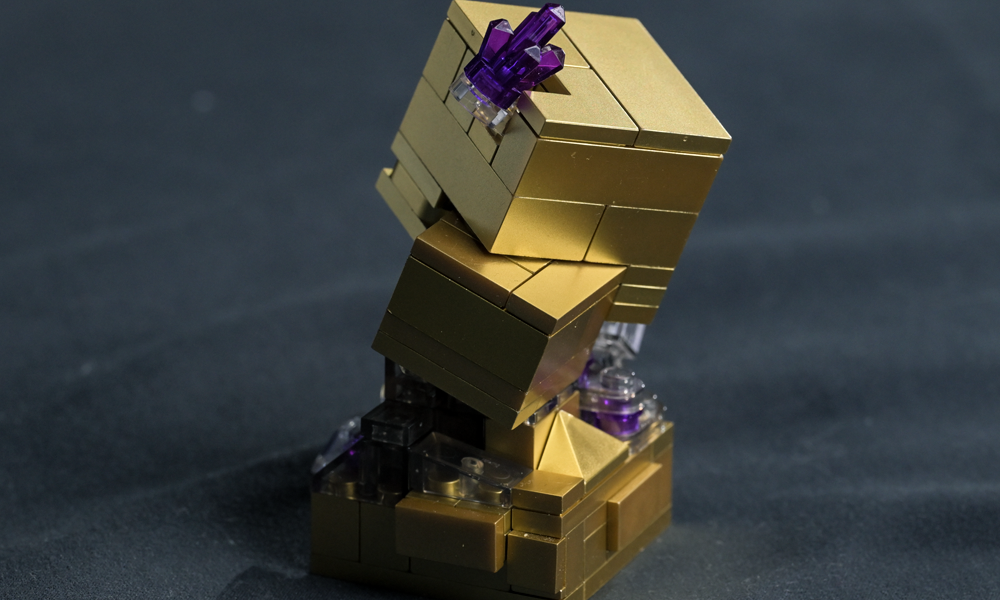
Amethyst (SiO₂), The Greeks believed amethyst could prevent drunkenness. Its name comes from amethystos (“not intoxicated”). Legends say Dionysus, god of wine, created the gem by staining quartz purple with his tears.
Science: Purple color comes from iron impurities and natural radiation. Once as rare as diamonds, large Brazilian deposits made it affordable. It’s February’s birthstone.
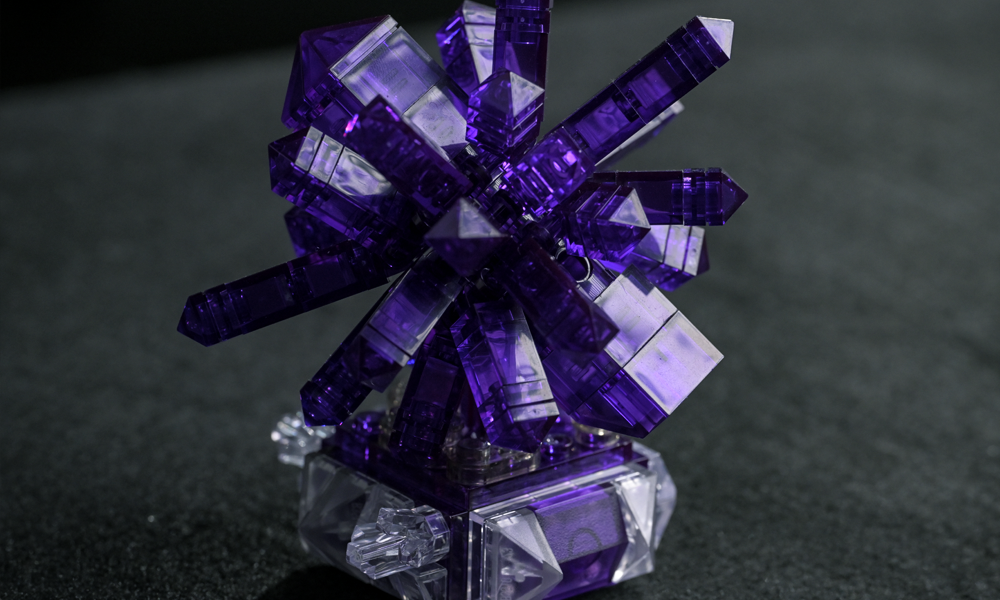
Emerald (Be₃Al₂(SiO₃)₆), Cleopatra adored emeralds, claiming ownership of all Egyptian mines. Spanish conquistadors looted South American emeralds, believing they held mystical powers.
Science: Chromium/vanadium impurities create its green hue. Most natural emeralds have inclusions (“jardin”), but synthetic ones are flawless. Colombia produces the finest specimens.
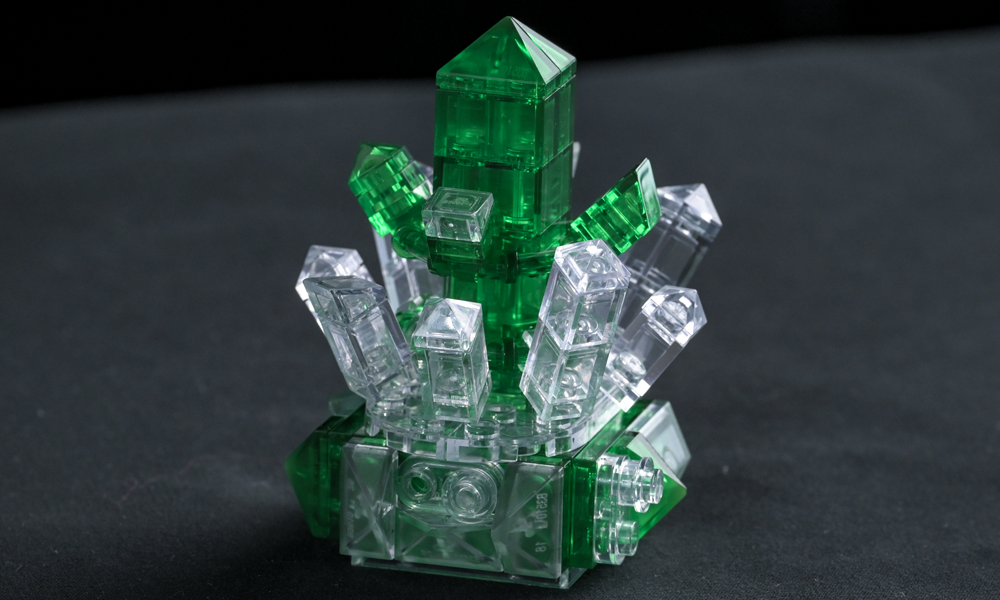
Rhodochrosite (MnCO₃), Argentina’s “Inca Rose” rhodochrosite comes from silver mines where Incas once worked. A legend claims the pink stripes represent blood of fallen Inca warriors turned to stone.
Science: Its raspberry-pink color comes from manganese. Rare “crimson spiral” crystals from Colorado’s Sweet Home Mine are collector’s gems. Argentina declared it their national stone in 2002.
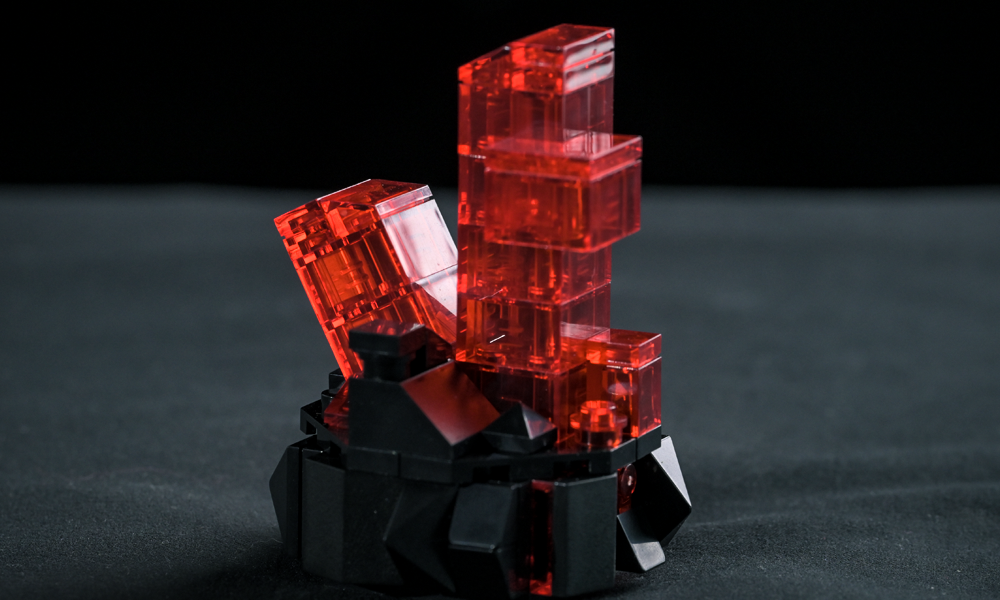
Smoky Quartz (SiO₂), Celtic tribes carved smoky quartz into talismans for protection. Scottish warriors carried “Cairngorm stones” (named after Cairngorm Mountains) as lucky charms.
Science: Its brown-to-black color results from natural radiation altering aluminum impurities. Heavily irradiated varieties become almost opaque, called “morion.” Used in jewelry and tech for piezoelectric properties.
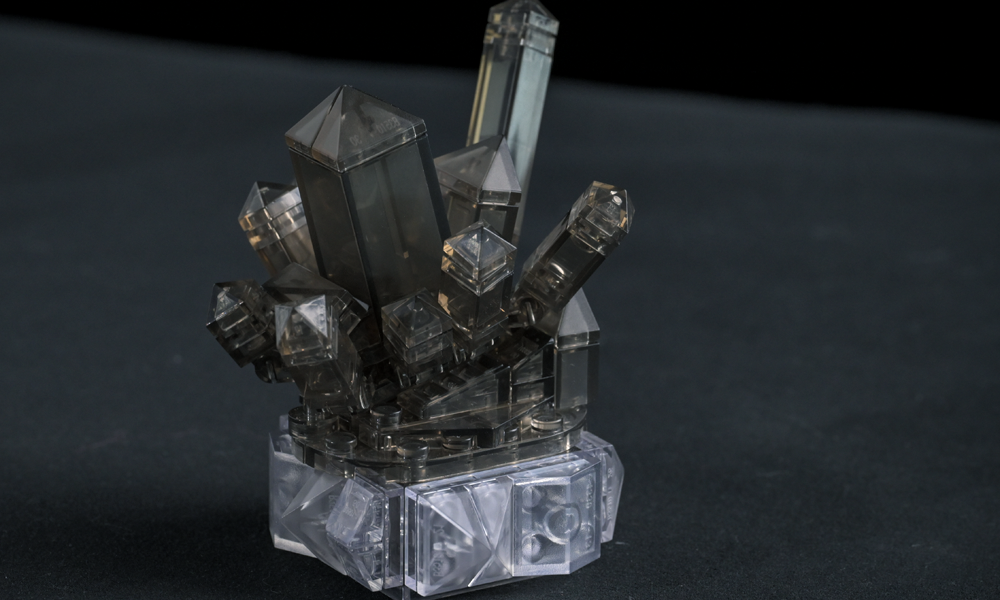
Designing the Undesignable: Crystals in Brick Form
Creating mineral models posed two big challenges:
Nature’s Chaos vs. Brick Order: Minerals like Rhodochrosite and Smoky Quartz have organic, irregular shapes. “Translating that into LEGO-style blocks was like teaching a cat to fetch,” Joe jokes. His solution? A mix of angular slopes and curved wedges to mimic crystalline edges.
The Color Conundrum: Real minerals shimmer with internal complexity, but bricks have flat hues. Joe’s workaround? Metallic-painted parts for Pyrite’s golden sheen and translucent pieces for Amethyst’s ethereal vibe. “We couldn’t replicate Mother Nature’s glitter,” he admits, “but we got dangerously close.”
The breakthrough came with a reusable black baseplate marked with color-coded sections. “It’s like IKEA instructions for rocks,” Joe laughs. “No more guessing which way’s up!”
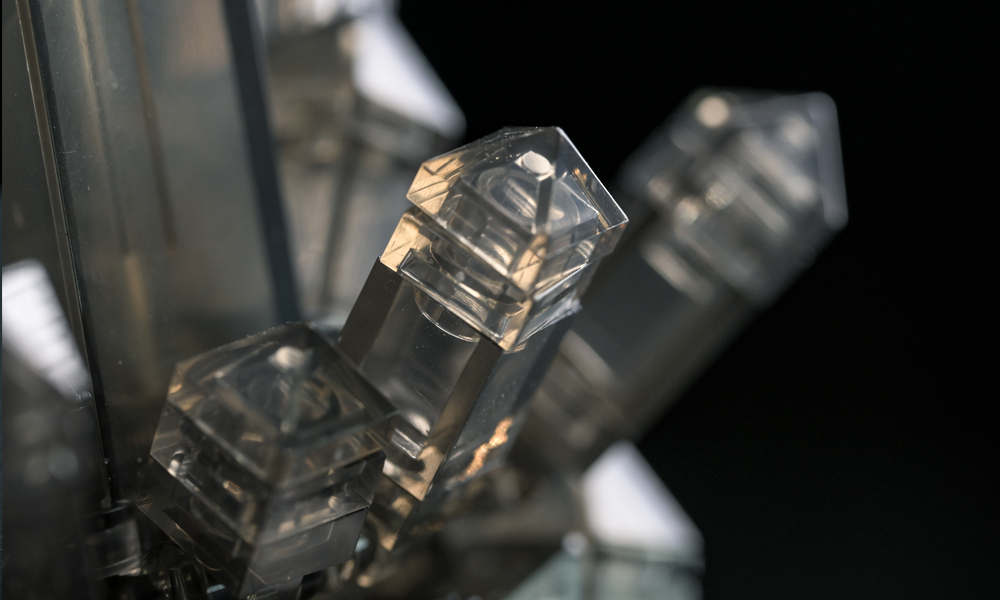
The "Why Bother?" Moments (And Why They Mattered)
Not every idea made the cut. Early prototypes included an amber fossil (“Too Jurassic Park”) and a backlit “miner’s lamp” display (“It looked like a disco ball for geologists”). But Joe’s team persisted, driven by a mantra: Dare to be different.
“We could’ve stuck with basic quartz colors,” Joe says. “But where’s the fun in that? Real collectors know minerals like Stibnite or Emerald have attitude.”
For the Fans: A Message from Joe:
To the NifeliZ community, Joe has one request: “Play. Experiment. Stack these minerals into a tiny volcano if you want! They’re yours now.”
Why This Set Matters
In a world obsessed with speed, the NifeliZ Mineral Collection invites you to slow down. It’s not just a building brick set—it’s a bridge between science and art, precision and whimsy. Whether you’re a LEGO enthusiast, a geology nerd, or just someone who needs a break from Zoom calls, these models are gifts for adults who never lost their sense of wonder.
As Joe puts it: “Life’s too short to build boring stuff, Build Elegance in Nature.”
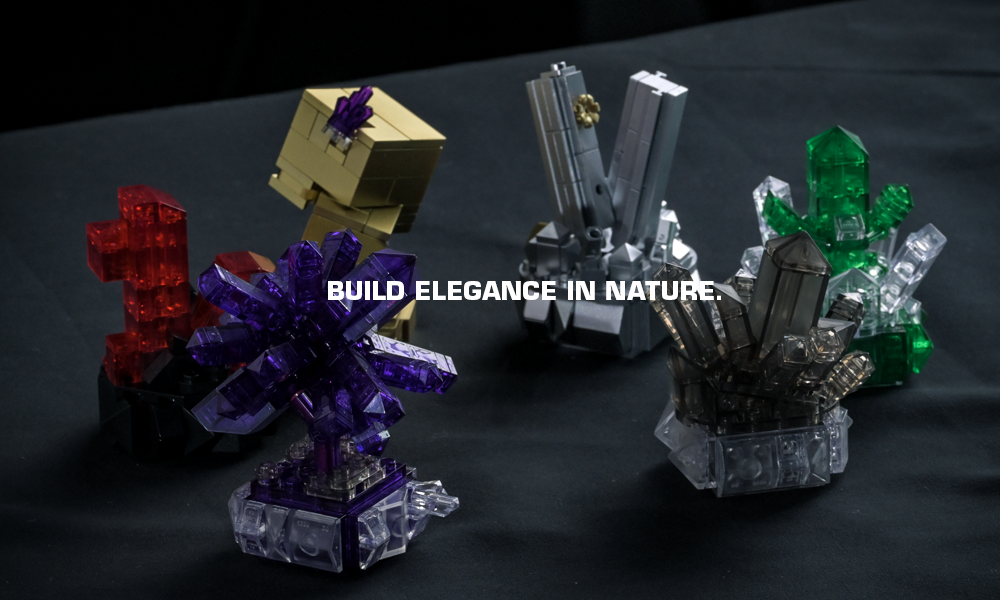
- No Comments


